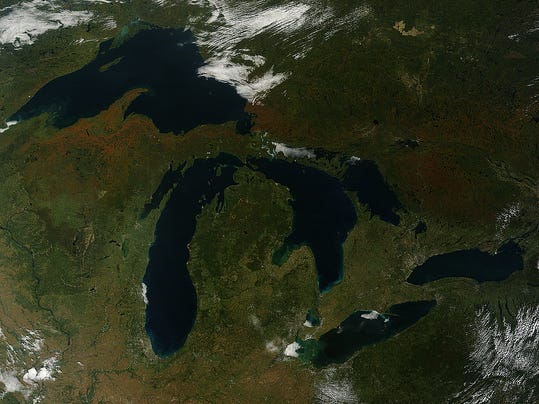official science and technology thread
Posted: Tue Jun 03, 2014 12:28 pm
have to start somewhere don't we again?
A co-op community for Arizona Fans
http://beardownwildcats.com/
Or just beaming the waste right out of you.azgreg wrote:There are times when I'd like to be able to beam myself to the bathroom.
Baby steps.UAdevil wrote:Or just beaming the waste right out of you.azgreg wrote:There are times when I'd like to be able to beam myself to the bathroom.
Yesterday, there was a wall of Tesla patents in the lobby of our Palo Alto headquarters. That is no longer the case. They have been removed, in the spirit of the open source movement, for the advancement of electric vehicle technology.
Tesla Motors was created to accelerate the advent of sustainable transport. If we clear a path to the creation of compelling electric vehicles, but then lay intellectual property landmines behind us to inhibit others, we are acting in a manner contrary to that goal. Tesla will not initiate patent lawsuits against anyone who, in good faith, wants to use our technology.
When I started out with my first company, Zip2, I thought patents were a good thing and worked hard to obtain them. And maybe they were good long ago, but too often these days they serve merely to stifle progress, entrench the positions of giant corporations and enrich those in the legal profession, rather than the actual inventors. After Zip2, when I realized that receiving a patent really just meant that you bought a lottery ticket to a lawsuit, I avoided them whenever possible.
At Tesla, however, we felt compelled to create patents out of concern that the big car companies would copy our technology and then use their massive manufacturing, sales and marketing power to overwhelm Tesla. We couldn’t have been more wrong. The unfortunate reality is the opposite: electric car programs (or programs for any vehicle that doesn’t burn hydrocarbons) at the major manufacturers are small to non-existent, constituting an average of far less than 1% of their total vehicle sales.
At best, the large automakers are producing electric cars with limited range in limited volume. Some produce no zero emission cars at all.
Given that annual new vehicle production is approaching 100 million per year and the global fleet is approximately 2 billion cars, it is impossible for Tesla to build electric cars fast enough to address the carbon crisis. By the same token, it means the market is enormous. Our true competition is not the small trickle of non-Tesla electric cars being produced, but rather the enormous flood of gasoline cars pouring out of the world’s factories every day.
We believe that Tesla, other companies making electric cars, and the world would all benefit from a common, rapidly-evolving technology platform.
Technology leadership is not defined by patents, which history has repeatedly shown to be small protection indeed against a determined competitor, but rather by the ability of a company to attract and motivate the world’s most talented engineers. We believe that applying the open source philosophy to our patents will strengthen rather than diminish Tesla’s position in this regard.
Scientists have found evidence of a huge underground reservoir containing up to three times as much water as on the entirety of the earth’s surface and theorized to be the source for all the world’s oceans.
The new evidence, published Friday in the journal Science, suggests that melting rocks, including those containing the water-rich mineral ringwoodite, may exist far deeper below the earth’s surface. The discovery suggests to researchers that most of the earth’s water seeped out from within, as opposed to arriving on ice-bearing comets, a theory many scientists have posited.
“I think we are finally seeing evidence for a whole-earth water cycle, which may help explain the vast amount of liquid water on the surface of our habitable planet,” said Steve Jacobsen, a Northwestern University professor and a co-author of the study. “Scientists have been looking for this missing deep water for decades.”
Jacobsen's study suggests that the movement and melting of rocks containing water-rich ringwoodite could produce water capable of seeping out to the surface. Jacobsen said that if just 1 percent of the mantle’s mass is water, that would be nearly three times as much water as in all the oceans.
Jacobsen and his team studied only rock beneath the U.S. He said he wants to expand their study around the world to show that ringwoodite and its water are indeed a worldwide phenomenon.
Science is not political.4Life wrote:p.s. should this go in the politics, religion and beer instead?
I would say science overlaps into all those categories.

NASA scientist and Advanced Propulsion Team Lead Harold White has the kind of job thousands dream of and few achieve — he’s in charge of the space agency’s efforts to determine if a faster-than-light warp drive is actually possible and, if it is, how we might create one. Now, in conjunction with artist Mark Rademaker, White has unveiled a new starship model that illustrates how our consideration of the concept has evolved over the decades. Rademaker designed the first theoretical warp ship concept to consciously echo the Matt Jeffries design for the UEV-47; the first faster-than-light version of the Starship Enterprise. This new version of the ship is chunkier, more compact, and according to Harold White, a better match for what the mathematics of an Alcubierre warp drive currently predict.
Woooooot!One good piece of news is that early fears that a hypothetical warp drive could be a star system-annihilating event have been disproven by a better evaluation of the mathematics. New data suggests this is unlikely to be an issue, though vessels observing the warp drive ship in close proximity could still be at risk. Energy requirements have also come down sharply, from Alcubierre’s initial calculation that planetary-sized power sources would be required to more recent data that suggests we could build a ship with a power source the size of Voyager 2 — if we can create the necessary effect at the appropriate scale.
Anyone living in a major U.S. city for the past decade may have noticed a change in the air. The change is apparent in new NASA satellite images unveiled this week that demonstrate the reduction of air pollution across the country.
After ten years in orbit, the Ozone Monitoring Instrument (OMI) on NASA's Aura satellite has been in orbit sufficiently long to show that people in major U.S. cities are breathing less nitrogen dioxide – a yellow-brown gas that can cause respiratory problems.
.....Nitrogen dioxide is one of the six common pollutants regulated by the U.S. Environmental Protection Agency (EPA) to protect human health. Alone it can impact the respiratory system, but it also contributes to the formation of other pollutants including ground-level ozone and particulates, which also carry adverse health effects. The gas is produced primarily during the combustion of gasoline in vehicle engines and coal in power plants. It's also a good proxy for the presence of air pollution in general.
Air pollution has decreased even though population and the number of cars on the roads have increased. The shift is the result of regulations, technology improvements and economic changes, scientists say.


The recipe: http://ibmblr.tumblr.com/post/879332255 ... lease-lookScrew modeling human intelligence and fighting brain cancer. Watson is now bringing us FOOD.
After analyzing successful recipes, Watson made his own: the Bengali Butternut BBQ Sauce. I initially gave it some side eye, but then I realized butternut squash is awesome, and spice makes everything better. IBM even posted the recipe for anyone who wants to try it at home. I'm debating whether I'm motivated enough to find some tamarind concentrate this weekend and whip it up.
Cognitive Cooking: http://www.ibm.com/smarterplanet/us/en/ ... t=usbrb301Bengali Butternut BBQ Sauce
Approximate Yield: 550g
300g butternut squash, diced
200g white wine
100g rice vinegar
50g butter, unsalted
5g tamarind concentrate
40g water
10g chili paste (Sriracha)
4g soy sauce
50g dates, pitted and chopped
2g Thai chili
3g mustard seed
3g turmeric, fresh, thinly sliced
0.4g cardamom, ground
5g coriander leaves
2g Meyer lemon zest, grated
5g salt, to taste
10g Meyer lemon juice
6g molasses
1. Gently sweat the squash in the butter over medium low heat until softened, approximately 5-10 minutes.
2. Add the vinegar, tamarind, water, wine, chili paste, and soy; bring to a simmer and reduce heat to low. Add the dates, chili, mustard seed, turmeric, and cardamom. Continue to simmer and reduce to roughly 250g, for about 20 minutes.
3. Remove from heat; add the coriander leaves and lemon zest. Blend to a very smooth consistency and cool.
4. Season the mixture with salt, lemon juice, and molasses. Chill.



That article sounds to me like they're not even all that close on it.azgreg wrote:That sounds promising.
I agree:PieceOfMeat wrote:That article sounds to me like they're not even all that close on it.azgreg wrote:That sounds promising.

Who came up with the name Sthenurines?gumby wrote:Giant rabbit-roo.
http://www.cnn.com/2014/10/16/world/gia ... kangaroos/
Cause of extinction: Ridicule.
PieceOfMeat wrote:Possibly curing paralysis? Smells good to me.
http://www.bbc.com/news/health-29645760
I'd be excited if it were meMerkin wrote:PieceOfMeat wrote:Possibly curing paralysis? Smells good to me.
http://www.bbc.com/news/health-29645760
Bet he is super excited his dick is working again too of all things.
This project is trying to develop commercial space travel.Merkin wrote:Awful, but why is there a need for pilots anymore?
Russia's version of the shuttle the Buran was pilotless in 1988.

